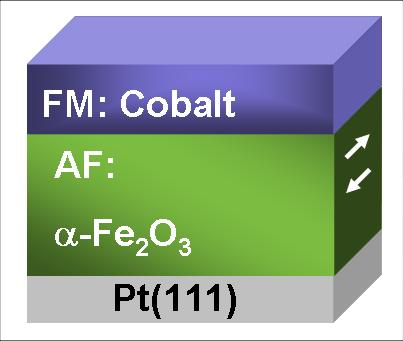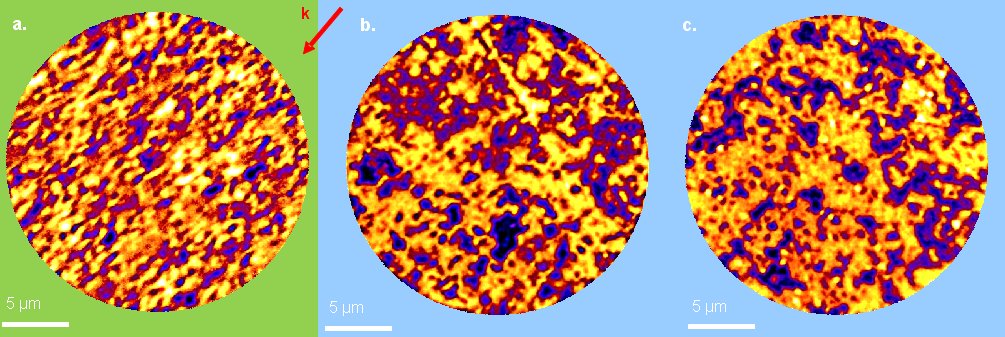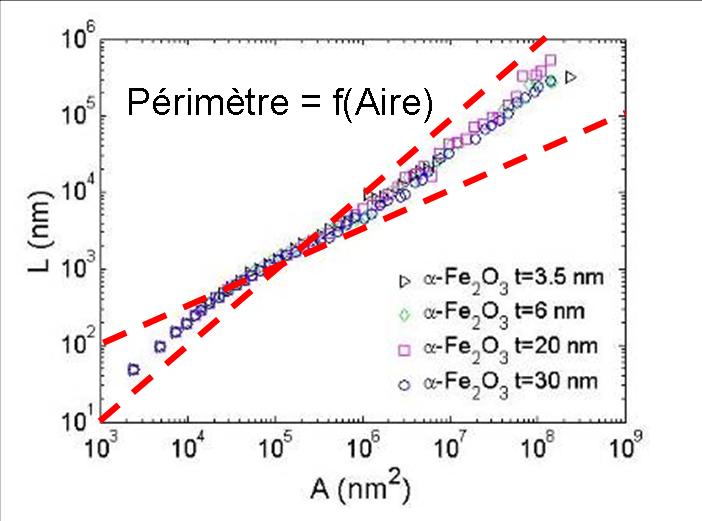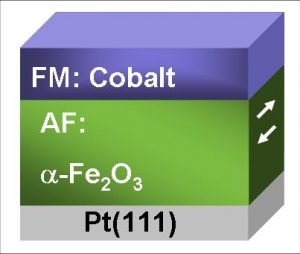O.Bezencenet, A.Barbier, D.Bonamy, R.Belkhou (SOLEIL), P.Ohresser (SOLEIL)
With the advent of spin electronics (spintronics), it became particularly important to visualize and understand how magnetic domains form in magnetic structures. This is particularly tricky for antiferromagnetic layers, which show no macroscopic magnetization and therefore interact weakly with probes.
Antiferromagnetic layers are essential elements in magnetic heterostructures where they are used to pin the magnetization of adjacent layers via magnetic exchange coupling. This type of structure is the basis of operation of modern magnetic sensors (giant magnetoresistance sensors, spin valves and tunnel junctions) and will most likely be incorporated into non-volatile magnetic memories of the future as well as in genuine multiferroic structures. The magnetic domain walls determine the level of noise in electronic devices. It is therefore particularly important and challenging to master them.

We used magnetic imaging by absorption of synchrotron radiation X rays to visualize, identify and quantify the magnetic domain structure of cobalt layers deposited on thin antiferromagnetic layers of an oxide, Fe2O3, whose deposition is perfectly mastered in the laboratory.
The magnetic domain structure in the cobalt layer (observed by XMCD: X-Ray Magnetic Circular Dichroism) is identical to the antiferromagnetic domain structure of the underlying Fe2O3 (observed by XMLD: X-Ray Magnetic Linear Dichroism). This evidences the magnetic coupling between the two layers. It is common that the domain structure of such antiferromagnetic layers is due to strong magnetocrystalline anisotropies and therefore cannot be easily modified. Furthermore the application of an external magnetic field has no effect on the antiferromagnetic layer, since its overall magnetization is zero.

Statistical analysis of the magnetic domain images shows that the size distribution of the Fe2O3 antiferromagnetic domains follows a nontrivial scaling law. In particular, the domain perimeter depends on the area by a power law with a fractal exponent characteristic of a random Ising growth model. Remarkably, this characteristic distribution is invariant with film thickness, and the statistical laws are also the same for the very thin layer (less than 3 nm), which is ferrimagnetic. The antiferromagnetic domain structure is thus inherited from the initial layer!
The initial ferimagnetic layer is well sensitive to an external magnetic field. This suggests that it becomes possible by applying a strong magnetic field (> 1 Tesla) at the beginning of the layer growth, to tune the antiferromagnetic domain structure. The method was verified experimentally and has been the subject of a patent. We have thus a good method to control and tune the magnetic domain structure of the active ferromagnetic cobalt overlayer.
References:
– Origin and tailoring of the antiferromagnetic domain structure in α-Fe2O3 thin fims unraveled by statistical analysis of dichroic spectro-microscopy (X-PEEM) images
O.Bezencenet, D.Bonamy, R.Belkhou, P.Ohresser and A.Barbier,
Physical Review Letters 2011, in press.
See also:
– Beyond the Magnetic Domain Matching in Magnetic Exchange Coupling
H. Magnan, O. Bezencenet, D. Stanescu, R. Belkhou, and A. Barbier,
Phys. Rev. Lett. 105 (2010) 097204.





